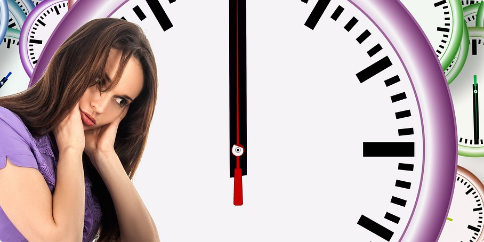As a trader, I have often struggled with having a stop-loss order in my trades. Early in my trading career, I used to trade without a stop-loss. I would make lots of money, but then there is just one trade that would take away all my profits (and even blow up my account).
After constantly being in a cycle of gains and losses, I eventually put stops in my trades. While doing so, I tested both hard stops and mental stops, understanding which is beneficial and at what times.
Now that I am wise at risk management and my stops, I thought it wise to create a post on stop-loss orders and how traders can use stops to safeguard capital and profits made. But first, let’s look at the meaning of mental and hard stops.
Mental stop-loss
A mental stop-loss order or soft stop-loss order is when a trader has a pre-determined exit point on a trade (in his mind) without setting/placing it in the trading system. Such a trader knows when and where to cut losses or exit a trade without putting any variables in the system.
Hard stop-loss
A hard stop-loss order is when a trader has placed a determined exit point (variable) in the system so that the trading system automatically closes all positions for the trader when the point is reached.
Simply put: a mental stop-loss order is where a trader trades with no clearly defined stop-loss entry. The trader (with a stop-loss in his mind) will manually close the trade when his risk appetite is peaked.
On the other hand, a hard stop-loss order is where a losing trade is automatically closed by the trading system using the instructions placed in the system by the trader when entering a position.
Benefit of stop-loss orders
Many traders don’t use stop-loss orders. They believe the market is designed to hunt stop-losses. However, this is not entirely true. And so they never make it in Forex.
In trading, it is so easy to make mistakes. Bias, FOMO, emotions, late and early entry, and psychology are factors that can seriously change the outcome of your trade or position. Stop-loss orders help to minimize the losses that may come from these and other unknown risks.
Personally, most of my losses come from bias and failure to follow my trading plan. I came to realize later that if I don’t use stop-losses in my trades, I will end up losing all my money. Stop-loss orders have helped keep my losses low and be profitable.

When to use a hard or mental stop-loss order
There is a lot that goes into a trader’s mind before, after, and every time he/she enters into a trade. From my experience, the choice of a stop-loss order to use will be determined by these three factors:
- Market volatility
- Backtesting a trading plan
- Bias
- Scalping
Market volatility
When the market is volatile, it is prudent to use hard stops since you don’t know how far a trade would go if your entry was incorrect. Volatility plus news amplifies the movement of trades. Assets such as commodities always make big moves quickly.
Without a hard stop-loss order in place, you will rarely find an opportunity to close a trade at the point you had thought of. Most times, the trade will leave you with a great loss or probably blow your account.
The reverse happens in a less volatile market. Such markets have little movement and this makes it easy to get out of a position with a little loss if things don’t go in your favor. Thus, you can use a mental stop-loss. Even so, it would be prudent to be on the screen watching what the trade is doing so that you can cut your losses when you have peaked your risk appetite.
Backtesting a trading plan
If you are still backtesting your trading plan, use a hard stop-loss order to minimize your losses. Remember that during the backtesting stage, you aren’t sure of what is working—you are still confirming where your plan succeeds or fails. A hard stop-loss order will help limit your losses and ensure you don’t lose more than anticipated in your backtesting period.
Bias
Bias is a major cause of loss for most traders. Situation bias, recency bias, and confirmation bias can cause you significant losses.
Confirmation bias has been my major undoing, contributing to most of my losses, and that is why I always use hard stop-loss orders when I know my entry may be based on bias. A hard stop-loss order ensures that my losses don’t exceed my risk tolerance.
You are a scalper
Scalpers often want to be in the market for a short duration. Thus, they are most often interested in their take profit rather than stop-losses. Of course, being a scalper requires lots of experience and an in-depth understanding of the market. Since most of their entries are on the lower time frames (and are probably sure their entry will result in a profit), they rarely put hard stops on their trades.
Which stop-loss order should I use?
The choice of a stop-loss order to use can be hard to tell because different traders have different risk tolerances, trading strategies, trading times, etc. What I know is that it takes some time and experience to know whether to use a mental stop-loss or hard stop-loss order.
Before you decide which stop-loss order to use, you must carefully assess the market conditions (volatility, liquidity, news, etc.) and your risk appetite. Don’t use what another trader tells you. By analyzing your risk appetite, trading plan, fundamentals, and other factors that may cause you losses, you can tell whether to use hard stops or mental stop-loss orders in your trades.

Leave a Reply